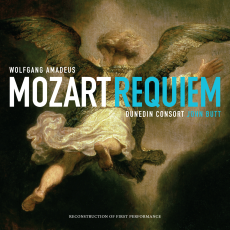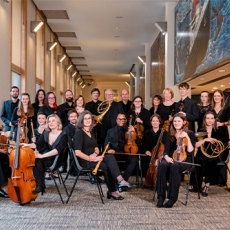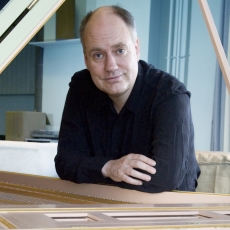Dunedin Consort - Mozart: Requiem - musica Dei donum
Mozart's Requiem in d minor is one of the most
frequently-performed compositions in music history. It is also the subject of
much debate and research as the composer left it unfinished when he died in
December 1791. Setting aside the myths which have been woven around this work
and the reasons Mozart wrote it, it is especially the way his pupil Süßmayr
finished the score which has been a matter of debate. Most scholars and
interpreters feel that his contributions are rather below the standard of
Mozart's own work, and several attempts have been made to create alternatives
for the parts Mozart did not compose himself. Some 'reconstructions' are quite
radical, others are more moderate, dependent on the view of Süßmayr's work. One
of the aspects about which scholars have different views is to what extent
Süßmayr's completion is based on material from Mozart's pen.
There
has been a time that many performances were based on one of these
reconstructions, for instance by Franz Beyer, Richard Maunder or Robert Levin.
However, I have the impression that today most performers seem to return to
Süßmayr. After all, the reconstructions are all from our time, and Süßmayr is
probably as close to Mozart as we can get. From a historical perspective the
recordings by John Butt and Stephen Cleobury are particularly interesting. Both
perform the Requiem in the edition by Süßmayr. Butt
attempts to reconstruct the first performance in 1793, after Süßmayr had added
the missing parts. His performance is based on a new edition of his version by
David Ian Black who removed some later 'improvements'. Even more interesting is
the line-up of this performance.
The
performance in 1793 was part of a benefit concert for Mozart's widow,
Constanze, which was organized by his long-time patron, Baron Gottfied van
Swieten. The performance was given by the Gesellschaft der Associierten
Cavaliere, which in previous years had also been responsible for the
performances of Mozart's arrangements of vocal works by Handel. Therefore Butt
assumes that the forces with which they performed the Requiem were
about the same as those in these Handel arrangements. He opted for a choir of
sixteen voices, four of which sing the solo parts. This results in a strong
coherence between soli and tutti. Butt states that this kind of line-up was common
practice in the 17th and 18th centuries. Setting aside the number of singers
involved it is certainly true that sacred music was usually not scored for
soloists, choir and orchestra, but rather for a vocal and instrumental
ensemble. There is not only a unity between soli and tutti, but also between
the soloists. That comes especially to the fore in the 'Tuba mirum', but less
so in the Benedictus, due to the slight vibrato of Rowan Hellier. There is also
some vibrato now and then in the tutti, especially in the Kyrie. However, these
are only minor blots on a generally very impressive performance which has
certainly some dramatic traits, but - thanks to the relatively small forces -
is rather intimate, which suits this piece quite well. Butt believes that there
was probably no organ at the performance of 1793 and therefore makes use of a
fortepiano. Unfortunately it is hardly audible.
Butt
also refers to a performance just five days after Mozart's death. It is not
possible to know exactly which parts were performed, but certainly not the
version by Süßmayr as he had not completed the missing parts yet. Butt performs
only the Requiem aeternam and the Kyrie, in a line-up which is probably
identical with that of the 1791 performance: four voices for the solo parts
with four ripieno singers, single strings and lesser
wind. From that time also dates Misericordias Domini (KV 222) which
is performed here with the same forces.
...
John Butt is the only of the four conductors who
opted for the German pornunciation of Latin. That seems historically correct,
and I wonder whether any of the other coductors has given this subject any
thought.


